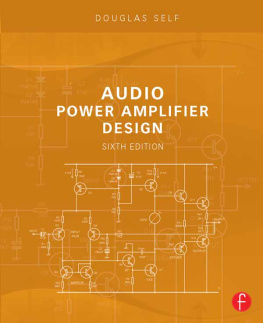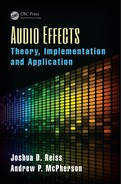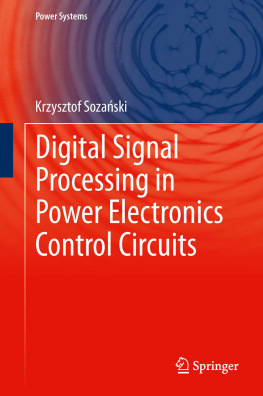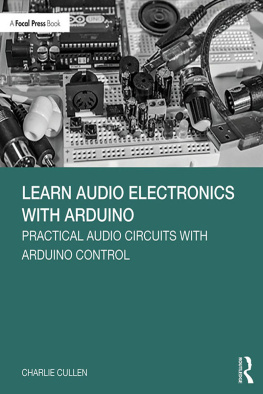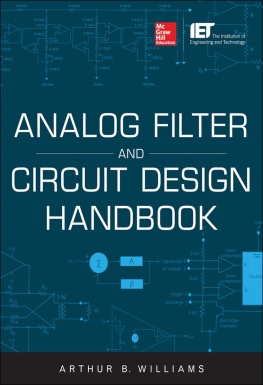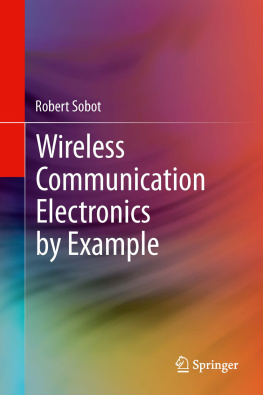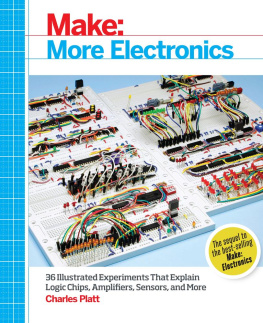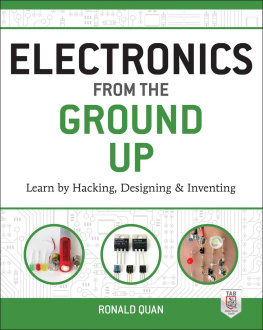Praise for the second edition
Self provides solid, well-explained technical information throughout the book, all gained from years of experience and a thorough understanding of the entire topic () His book exudes skilful engineering on every page, and I found it a very refreshing, enjoyable, and inspirational read () if you have the slightest interest in audio circuit design this book has to be considered an essential reference. Very highly recommended.
Hugh Robjohns, Sound on Sound Magazine
This book presents a large body of knowledge and countless insider-tips from an award-winning commercial audio designer () Douglas Self dumps a lifetimes worth of thoroughly-tested audio circuit knowledge into one biblical tome.
Joseph Lemmer, Tape Op
Small Signal Audio Design
Small Signal Audio Design is a highly practical handbook providing an extensive repertoire of circuits that can be assembled to make almost any type of audio system. The publication of Electronics for Vinyl has freed up space for new material (though this book still contains a lot on moving-magnet and moving-coil electronics), and this fully revised third edition offers wholly new chapters on tape machines, guitar electronics, and variable-gain amplifiers, plus much more. A major theme is the use of inexpensive and readily available parts to obtain state-of-the-art performance for noise, distortion, crosstalk, frequency response accuracy, and other parameters. Virtually every page reveals nuggets of specialised knowledge not found anywhere else. For example, you can improve the offness of a fader simply by adding a resistor in the right place if you know the right place.
Essential points of theory that bear on practical audio performance are lucidly and thoroughly explained, with the mathematics kept to an absolute minimum. Selfs background in design for manufacture ensures he keeps a wary eye on the cost of things.
This book features the engaging prose style familiar to readers of his other books. You will learn why mercury-filled cables are not a good idea, the pitfalls of plating gold on copper, and what quotes from Star Trek have to do with PCB design.
Learn how to:
- make amplifiers with apparently impossibly low noise
- design discrete circuitry that can handle enormous signals with vanishingly low distortion
- use humble low-gain transistors to make an amplifier with an input impedance of more than 50 megohms
- transform the performance of low-cost opamps
- build active filters with very low noise and distortion
- make incredibly accurate volume controls
- make a huge variety of audio equalisers
- make magnetic cartridge preamplifiers that have noise so low it is limited by basic physics, by using load synthesis
- sum, switch, clip, compress, and route audio signals
- be confident that phase perception is not an issue
This expanded and updated third edition contains extensive new material on optimising RIAA equalisation, electronics for ribbon microphones, summation of noise sources, defining system frequency response, loudness controls, and much more. Including all the crucial theory, but with minimal mathematics, Small Signal Audio Design is the must-have companion for anyone studying, researching, or working in audio engineering and audio electronics.
Douglas Self studied engineering at Cambridge University then psychoacoustics at Sussex University. He has spent many years working at the top level of design in both the professional audio and hi-fi industries and has taken out a number of patents in the field of audio technology. He currently acts as a consultant engineer in the field of audio design.
Small Signal Audio Design
Third edition
Douglas Self

Third edition published 2020
by Routledge
52 Vanderbilt Avenue, New York, NY 10017
and by Routledge
2 Park Square, Milton Park, Abingdon, Oxon, OX14 4RN
Routledge is an imprint of the Taylor & Francis Group, an informa business
2020 Douglas Self
The right of Douglas Self to be identified as author of this work has been asserted by him in accordance with sections 77 and 78 of the Copyright, Designs and Patents Act 1988.
All rights reserved. No part of this book may be reprinted or reproduced or utilised in any form or by any electronic, mechanical, or other means, now known or hereafter invented, including photocopying and recording, or in any information storage or retrieval system, without permission in writing from the publishers.
Trademark notice: Product or corporate names may be trademarks or registered trademarks, and are used only for identification and explanation without intent to infringe.
First edition published by Focal Press 2010
Second edition published by Focal Press 2015
British Library Cataloguing-in-Publication Data
A catalogue record for this book is available from the British Library
Library of Congress Cataloging-in-Publication Data
Names: Self, Douglas, author.
Title: Small signal audio design / Douglas Self.
Description: Third edition. | Abingdon, Oxon ; New York, NY : Routledge, 2020. | Includes bibliographical references and index.
Identifiers: LCCN 2019054386 (print) | LCCN 2019054387 (ebook) | ISBN 9780367468958 (paperback) | ISBN 9780367468965 (hardback) | ISBN 9781003031833 (ebook)
Subjects: LCSH: Audio amplifiersDesign and construction. | SoundRecording and reproducing. | Signal processing.
Classification: LCC TK7871.58.A9 S46 2020 (print) | LCC TK7871.58.A9 (ebook) | DDC 621.389/33dc23
LC record available at https://lccn.loc.gov/2019054386
LC ebook record available at https://lccn.loc.gov/2019054387
ISBN: 978-0-367-46896-5 (hbk)
ISBN: 978-0-367-46895-8 (pbk)
ISBN: 978-1-003-03183-3 (ebk)
Typeset in Times
by Apex CoVantage, LLC
Dedication
To Julie, with all my love
Scientia Potentia Est
- Another damned thick book! Always scribble, scribble, scribble! Eh, Mr. Gibbon?
- Attributed to Prince William Henry, Duke of Gloucester, in 1781 upon receiving the second volume of The History of the Decline and Fall of the Roman Empire from its author.
This book deals with small-signal audio design; the amplification and control of audio in the analogue domain, where the processing is done with opamps or discrete transistors, usually working at a nominal level of a volt or less. It constitutes a major update of the second edition. Small-signal design is the opposite term to large-signal design, which in audio represents power amplifiers driving loudspeakers rather than the electricity distribution grid or lightning.
As stated on the back cover of this book, the publication of Electronics For Vinyl [1] allowed the vinyl-oriented material in this book to be much reduced, so the space freed can be used for new material. All the phono material that was in the second edition of Small Signal Audio Design is in Electronics For Vinyl, plus a great deal more. Therefore the chapters on moving-magnet inputs have been reduced to one ( also contains new information that has been acquired since EFV was written.
So much has been added to this edition that it is difficult to summarise, but the new material includes:


